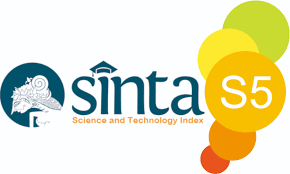The Concept of Application of Renewable Energy in Campus Area
DOI:
https://doi.org/10.34010/injuratech.v3i2.14320Keywords:
Technology, Renewable Energy, Campus Area, Concept and ApplicationAbstract
Since ancient times, humans have relied heavily on fossil energy. Almost all industrial activities and daily activities are inseparable from dependence on non-renewable energy. Therefore, currently, it is being intensified with the utilization of renewable energy. This research aims to determine the technology-based renewable energy around the campus and open up insights into the use of renewable energy. This research method uses a qualitative descriptive approach. The results of this research are the introduction of renewable energy to the public, especially in the university environment. It is hoped that this research can be applied to renewable energy technology in the university environment. The conclusion from this renewable energy research can find new findings so that they have a contribution to science and education.
References
[2] Mazzucato, M., & Semieniuk, G. (2018). Financing renewable energy: Who is financing what and why it matters. Technological Forecasting and Social Change, 127, 8-22.
[3] Burke, M. J., & Stephens, J. C. (2018). Political power and renewable energy futures: A critical review. Energy research & social science, 35, 78-93.
[4] Shuba, E. S., & Kifle, D. (2018). Microalgae to biofuels:‘Promising’alternative and renewable energy, review. Renewable and sustainable energy reviews, 81, 743-755.
[5] Yang, Y., Bremner, S., Menictas, C., & Kay, M. (2018). Battery energy storage system size determination in renewable energy systems: A review. Renewable and Sustainable Energy Reviews, 91, 109-125.
[6] Rahman, M. M., & Velayutham, E. (2020). Renewable and non-renewable energy consumption-economic growth nexus: new evidence from South Asia. Renewable Energy, 147, 399-408.
[7] Infield, D., & Freris, L. (2020). Renewable energy in power systems. John Wiley & Sons.
[8] Alizadeh, R., Soltanisehat, L., Lund, P. D., & Zamanisabzi, H. (2020). Improving renewable energy policy planning and decision-making through a hybrid MCDM method. Energy Policy, 137, 111174.
[9] Harnowo, S. (2016). Analisis Kinerja Pembangkit Listrik Tenaga Biomasa Sawit (PLTBS) Pabatu PT Perkebunan Nusantara IV. Jurnal Mekanika dan Sistem Termal, 1(1), 14-20.
[10] Gielen, D., Boshell, F., Saygin, D., Bazilian, M. D., Wagner, N., & Gorini, R. (2019). The role of renewable energy in the global energy transformation. Energy strategy reviews, 24, 38-50.
[11] Quaschning, V. V. (2019). Renewable energy and climate change. John Wiley & Sons.
[12] Kumar, A., Sah, B., Singh, A. R., Deng, Y., He, X., Kumar, P., & Bansal, R. C. (2017). A review of multi criteria decision making (MCDM) towards sustainable renewable energy development. Renewable and sustainable energy reviews, 69, 596-609.
[13] Dewiyanti, D., Puspasari, A. M., Kamil, F. S. A., & Ningtyas, B. K. (2021). Exploratory study of visual enhancement to display smart apps on android phones for selasar imaji library. International Journal of Design (INJUDES), 1, 17-26.
[14] Hadiana, A. I. (2020). Fog Computing Architecture for Indoor Disaster Management. International Journal of Informatics, Information System and Computer Engineering, 1(1), pp. 79-90











